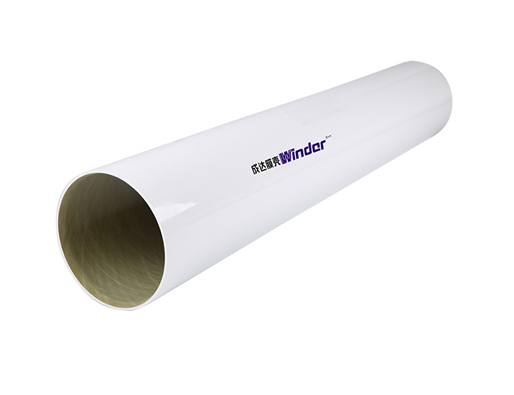Chemical cleaning of reverse osmosis membrane housings is an important part of the operation and maintenance of reverse osmosis devices, and it directly affects the performance and service life of reverse osmosis membrane pressure vessels During operation, although suitable operating conditions are selected, as the operating time increases, microorganisms, organic matter, and inorganic impurities in the membrane group will inevitably foul the membrane surface, causing fouling of the reverse osmosis membrane, causing system production. Decreased water volume and reduced salt rejection. Therefore, a certain cleaning method must be adopted to remove the pollutants on the membrane surface and the membrane pores, so as to achieve the purpose of restoring water permeability and extending the service life of the membrane.
When the reverse osmosis system (or device) has the following symptoms, chemical cleaning or physical flushing is required:
(1) Under normal water supply pressure, the water production is reduced by 10% ~ 15% compared with the normal value;
(2) In order to maintain normal water production, the water supply pressure after temperature correction is increased by 10% ~ 15%; the water quality of the produced water is reduced by 10% ~ 15%, the salt permeability is increased by 10% ~ 15%; the water supply pressure is increased by 10% ~ 15%;
(3) The pressure difference between various sections of the system increases rapidly and significantly.
Membrane cleaning methods can be divided into two categories: physical and chemical.
1.Physical law
Physical cleaning uses mechanical methods to remove pollutants from the membrane surface. These methods include: forward flushing, reverse direction flushing, back pressure flushing, vibration cleaning, exhaust flushing, air jet, and carbon dioxide Method and automatic sponge ball cleaning method, among which the direction changing flushing method is the most effective cleaning method in physical cleaning method.
2.Chemical method
Chemical cleaning usually uses chemical cleaning agents to clean, such as dilute acid, dilute alkali, enzyme, surfactant, binding agent and so on. Acid-based cleaning agent can dissolve and remove minerals and DNA. Chemicals such as citric acid and EDTA can be used for descaling and alkaline pollutants. Detergents such as Biz and Uitrasol can effectively remove biological pollution.
Sometimes, for a special pollutant or pollution situation, the special chemical cleaning agent of the RO pharmaceutical manufacturer should be used, and when applied, the product performance and use instructions provided by the pharmaceutical supplier must be followed. In special cases, you can take out the single membrane element that has been polluted from the reverse osmosis device for testing and cleaning tests to determine the appropriate chemical agent and cleaning plan. When cleaning by chemical method, the chemicals used must be compatible with the membrane material, and strictly follow the conditions (pressure, temperature, pH and flow rate) proposed by the membrane manufacturer to prevent membrane from irreversible damage.

Dtro Membrane Housings
3.Increase preventive cleaning
After running the reverse osmosis membrane system for a period of time, some scale-forming substances will form on the membrane surface, but when the cleaning conditions are not reached, the scale-forming substances on the surface of dtro membrane housings become crystal nuclei for crystal growth, and the crystal growth rate Accelerating, the pressure difference of each section of reverse osmosis increased faster. Preventive cleaning can maintain the cleanliness of the film surface and reduce the effects of concentration polarization.